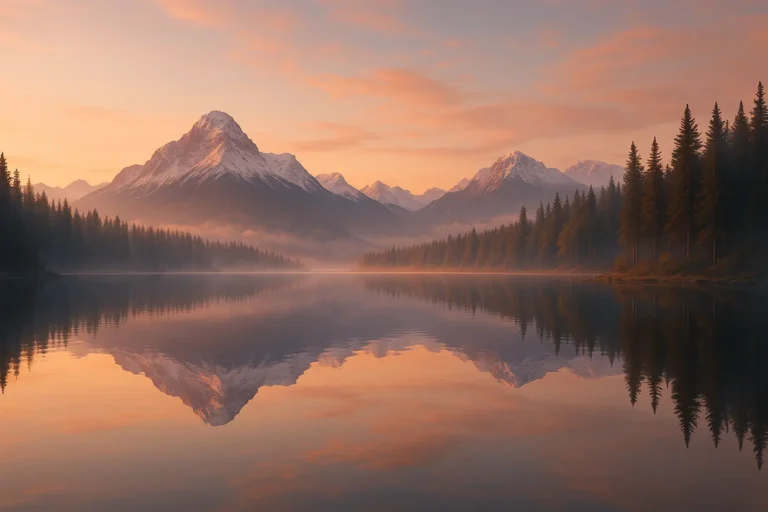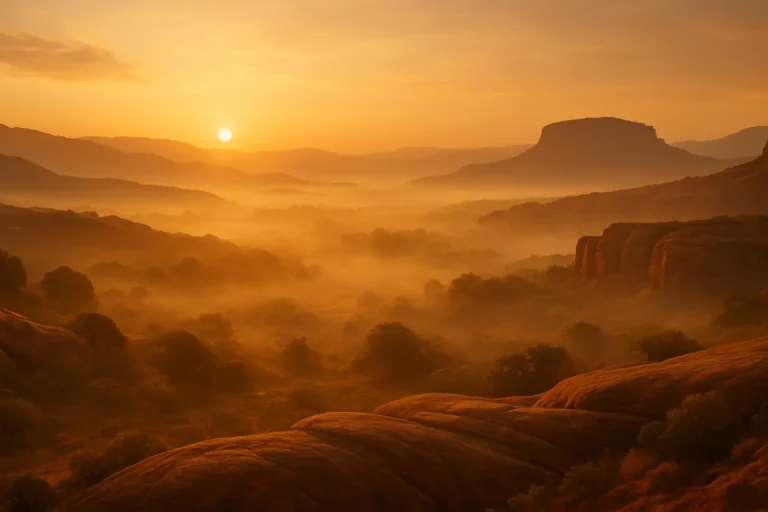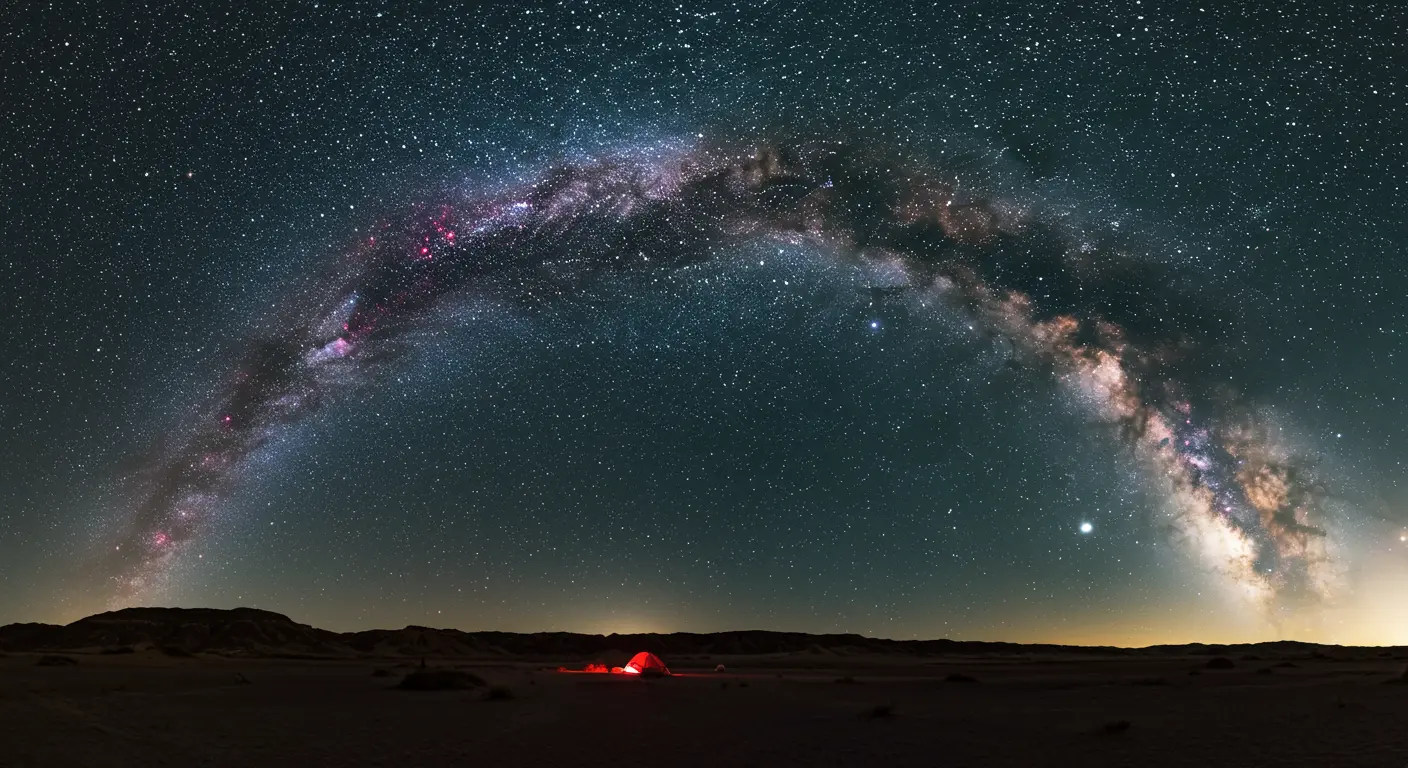
There’s a map etched into the human spirit, one that predates any earthly chart. It’s a celestial cartography, traced not in ink, but in starlight, in the silent, shimmering awe that unfolds when we cast our gaze towards the velvet expanse of the night sky. ✨ For millennia, we have looked up, seeking guidance, weaving stories, feeling both humbled and expanded by the cosmic ballet above.
Yet, in our brightly lit modern world, this ancient connection often feels like a faded memory, obscured by the persistent glow of cityscapes. The Milky Way, once a nightly spectacle for nearly all of humanity, is now a rare treasure for many. But listen closely… a quiet yearning is stirring. A desire to reclaim that lost darkness, to once again stand beneath a truly star-drenched sky.
This is the soulful current powering the rise of astrotourism – a journey not just to a place, but to a profound experience. It’s a pilgrimage to the pristine darkness of remote sanctuaries, a quest to witness the universe in its unfettered glory. It’s about tracing lines of wonder from our own small hearts to the infinite canvas above. Join me, as we explore this luminous trend, navigating by the light of distant suns.
The Cosmic Renaissance: Why We’re Suddenly Yearning for the Stars
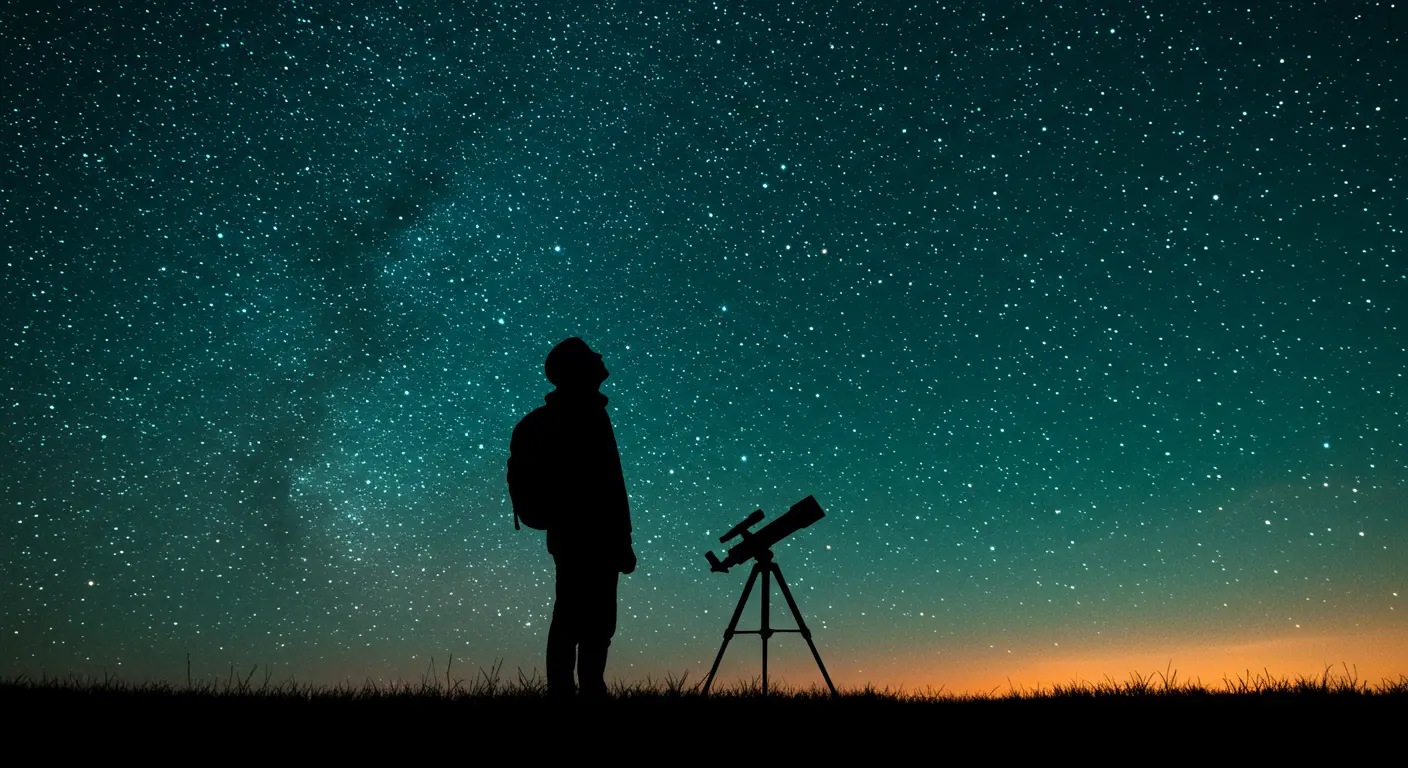
What fuels this stellar ascent in our travel dreams? Perhaps it’s a gentle rebellion against the tyranny of the screen, a collective sigh for something vast, real, and untamed by algorithms. Astrotourism is more than a niche; it’s a reflection of a deeper human need.
In a world saturated with information, the night sky offers pure, unadulterated wonder. It’s a silent teacher, whispering of immense scales of time and space, putting our earthly concerns into a gentle, cosmic perspective. This journey to the stars is also a journey inward. There’s a profound sense of peace, of connection, that unfurls when you stand in the cool night air, the only illumination coming from light that has traveled for eons to reach your eyes. 🌌
Moreover, the rise of accessible science communication has unveiled the universe’s marvels – nebulae like painterly clouds, distant galaxies as ghostly spirals, the possibility of seeing planets with our own eyes. This desire to witness these phenomena firsthand, to move from knowing to experiencing, is a powerful draw. It’s a chance to touch the intangible, to feel the pulse of the universe itself.
Sanctuaries of Shadow: Unveiling the Magic of Dark Sky Places
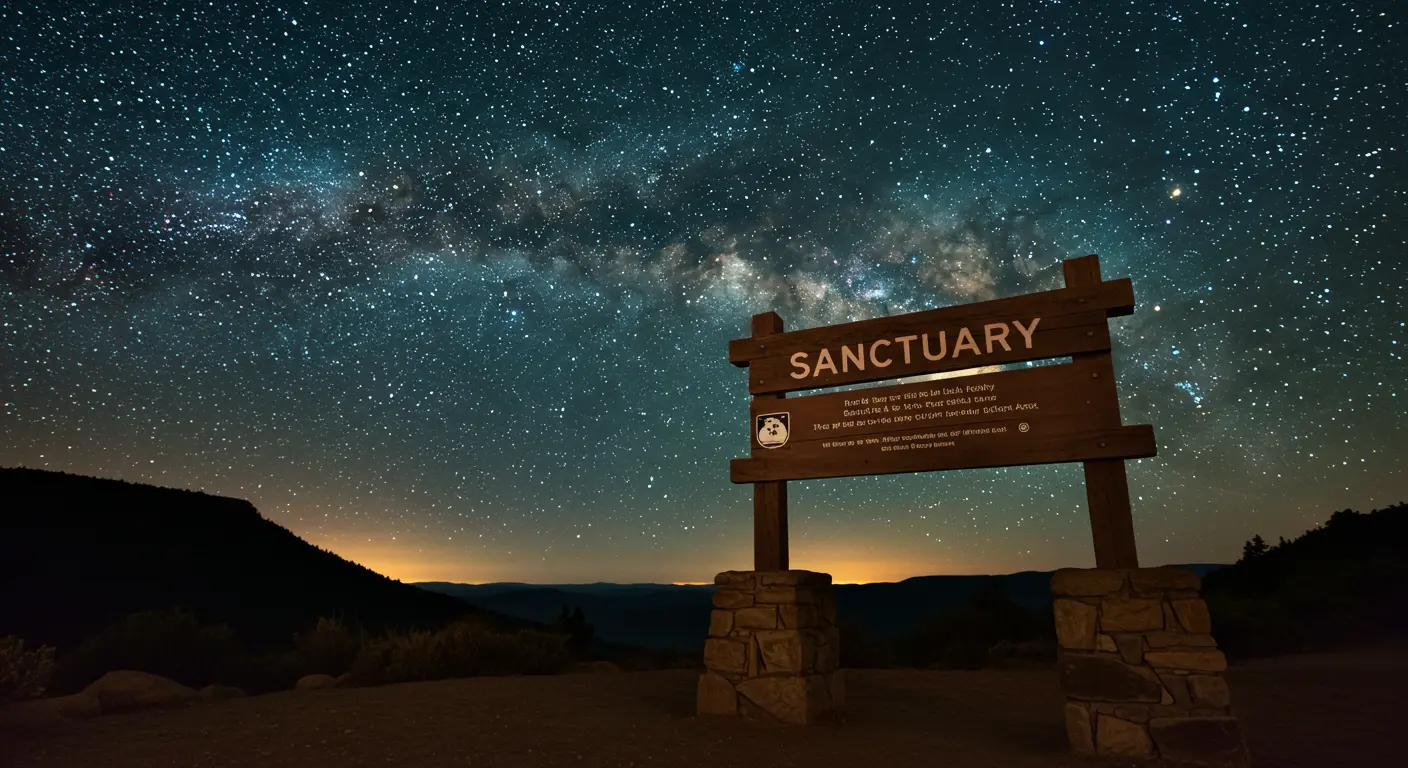
As our world has grown brighter, pockets of true darkness have become precious, guarded havens. These are the Dark Sky Sanctuaries, Parks, and Reserves – places recognized by organizations like the International Dark-Sky Association (darksky.org) for their commitment to preserving the natural night environment through responsible lighting policies and public education.
Imagine landscapes where the Milky Way doesn’t just shimmer; it blazes across the sky, a river of stars so dense it seems almost tangible. These sanctuaries, often found in remote national parks, deserts, or isolated islands, are the cathedrals of the cosmos, much like the destinations explored in The Quiet Cartography that charts courses to silence and soul. Places like the Aoraki Mackenzie International Dark Sky Reserve in New Zealand, or the otherworldly landscapes of Death Valley National Park in the US (an International Dark Sky Park), offer an unparalleled window to the universe.
Visiting such a place is an immersion. The air itself feels different, alive with the unseen. The darkness isn’t empty; it’s profoundly full, teeming with celestial wonders that city dwellers might never dream exist. It’s a reminder of the natural rhythm of night and day, a rhythm essential not just for wildlife, but for our own well-being. These sanctuaries are not just about seeing stars; they’re about experiencing true night, transforming them into modern-day sacred spaces under the velvet cloak of darkness.
Charting Your Celestial Voyage: A Solena Drift Guide to Stargazing Adventures
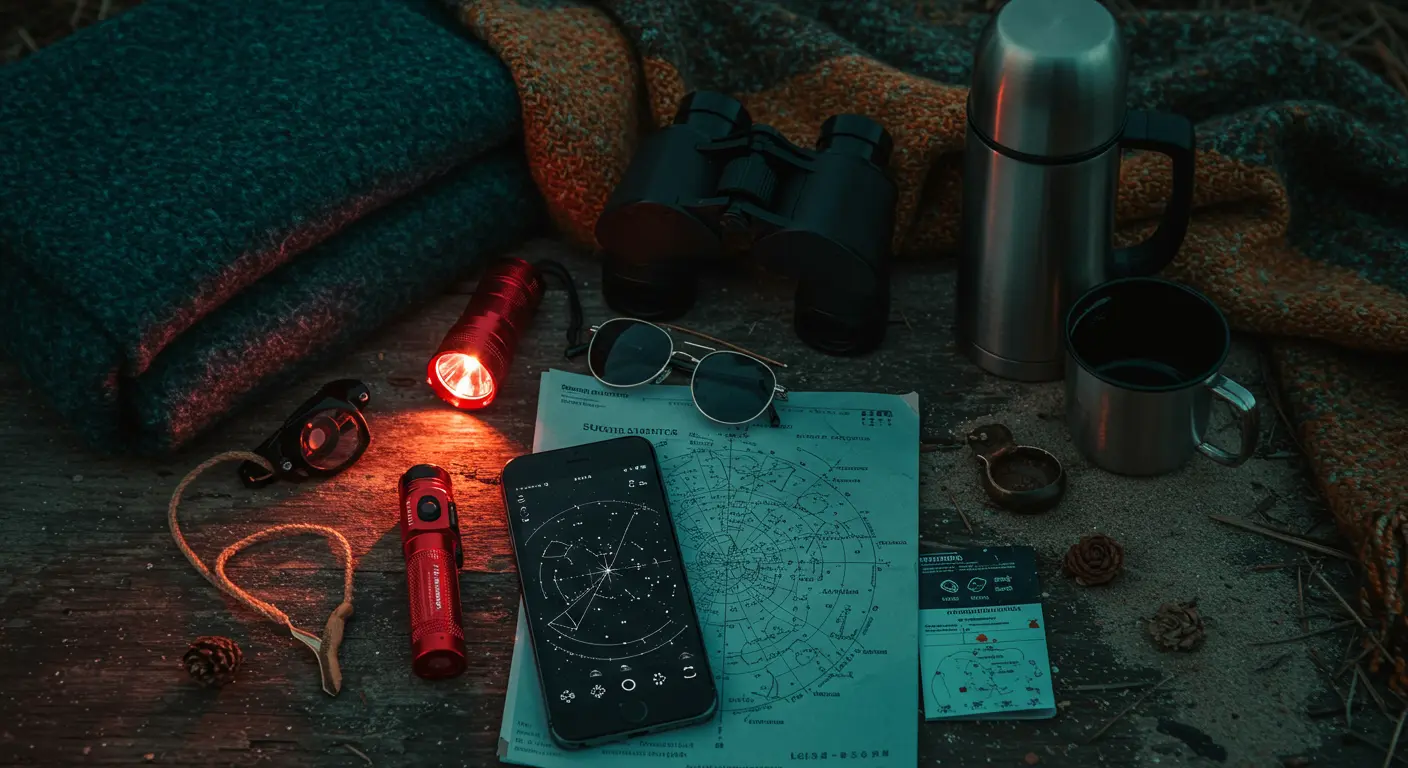
Ready to embark on your own starlit pilgrimage? The universe awaits, and a little preparation can make your celestial encounter even more magical. 🌠
First, seek the darkness. Use resources like the IDA’s interactive map to find certified Dark Sky Places near you or in a region you dream of visiting. Even if you can’t reach a certified park, heading a few hours away from city lights can make a dramatic difference.
Timing is key. A moonless night, or when the moon is a slim crescent, offers the darkest skies. Check a lunar calendar. Also, consider the seasons, as different constellations grace the night sky throughout the year. Many observatories, like the Lowell Observatory (lowell.edu) in Arizona (where Pluto was discovered!), offer public viewing nights and programs that can wonderfully enrich your experience.
What to bring?
- Red Flashlight: Essential! White light spoils your night vision (and that of others). Red light allows you to see your surroundings without compromising your ability to see faint stars.
- Binoculars or a Telescope: Even a good pair of binoculars can reveal craters on the moon, Jupiter’s moons, or the Andromeda Galaxy. A telescope, of course, opens up even more distant wonders. Many astrotourism destinations offer guided tours with equipment.
- Star Chart or App: Apps like SkySafari, Stellarium, or PhotoPills can help you identify constellations, planets, and celestial events in real-time.
- Warm Layers & Comforts: Nights can get chilly, even in the desert. Blankets, warm drinks ☕, and a comfortable chair will make your stargazing vigil much more pleasant.
- Patience & Awe: Give your eyes at least 20-30 minutes to fully adapt to the darkness. Then, just… look. Let the wonder wash over you.
More Than Starlight: The Soulful Stories Woven in the Cosmic Tapestry
A journey into the night is not just about ticking off celestial objects. It’s about reconnecting with a tradition as old as humanity: storytelling by starlight. Every culture has looked to the heavens and woven tales of gods, heroes, and cosmic dramas into the patterns of the stars.
When you gaze at Orion the Hunter or follow the arc of the Big Dipper, you are participating in this ancient lineage. There’s a profound sense of continuity, of shared human experience. The stars offer a canvas for reflection, for pondering life’s big questions, a clarity perhaps as profound as gazing into the still surface of Mirror Lakes, where the outer world and inner thoughts blend seamlessly.
This celestial cartography also maps our own inner landscapes. In the quiet dark, beneath the silent gaze of a billion suns, we can find a unique clarity. The universe doesn’t demand anything of us; it simply offers its grandeur. It’s an invitation to feel small, yet part of something impossibly vast and beautiful, much like the reverence inspired by other Sacred Landscapes across the globe. It’s a perspective that can re-align our priorities and soothe the soul.
Frequently Asked Questions (FAQ):
- Q: Do I need expensive equipment to enjoy astrotourism?
A: Not at all! While telescopes offer incredible views, the naked eye in a truly dark sky location can see thousands of stars, the Milky Way, meteors, and even some galaxies. Binoculars are a fantastic, affordable step up. The experience itself is the true gem. - Q: Is astrotourism suitable for families with children?
A: Absolutely! ✨ Introducing children to the wonders of the night sky can spark a lifelong love of science and nature. Many dark sky parks and observatories have family-friendly programs. Just remember the red lights and warm clothes! - Q: What’s the difference between a Dark Sky Park, Reserve, and Sanctuary?
A: These designations by the International Dark-Sky Association vary based on land management, size, and remoteness, but all are committed to preserving dark skies. Parks are often public lands with visitor amenities, Reserves are larger areas with a core dark zone and surrounding communities working together, and Sanctuaries are typically very remote and offer the darkest, most pristine skies. - Q: How can I help protect dark skies?
A: Be mindful of your own outdoor lighting at home – use shielded fixtures, point lights downward, use motion sensors, and choose warm-colored bulbs. Support businesses and communities that adopt dark sky-friendly practices. And, of course, share the wonder of the night sky with others!
A Starlit Invitation:
The universe is whispering. It invites you to step out from the glare, to seek a patch of darkness, and to simply look up. You don’t need to travel to the ends of the Earth (though those journeys are wondrous!). Perhaps it begins with finding a local astronomy club, or taking a blanket to a nearby park on a clear, moonless night.
Let your eyes adjust. Let the starlight paint stories on your soul. What constellations will you greet like old friends? What new wonders will you discover in that vast, velvet expanse? The celestial map is there, waiting for you to trace its lines. Your journey to the stars, however small the first step, is a journey back to a fundamental part of what makes us human. 🗺️✨



